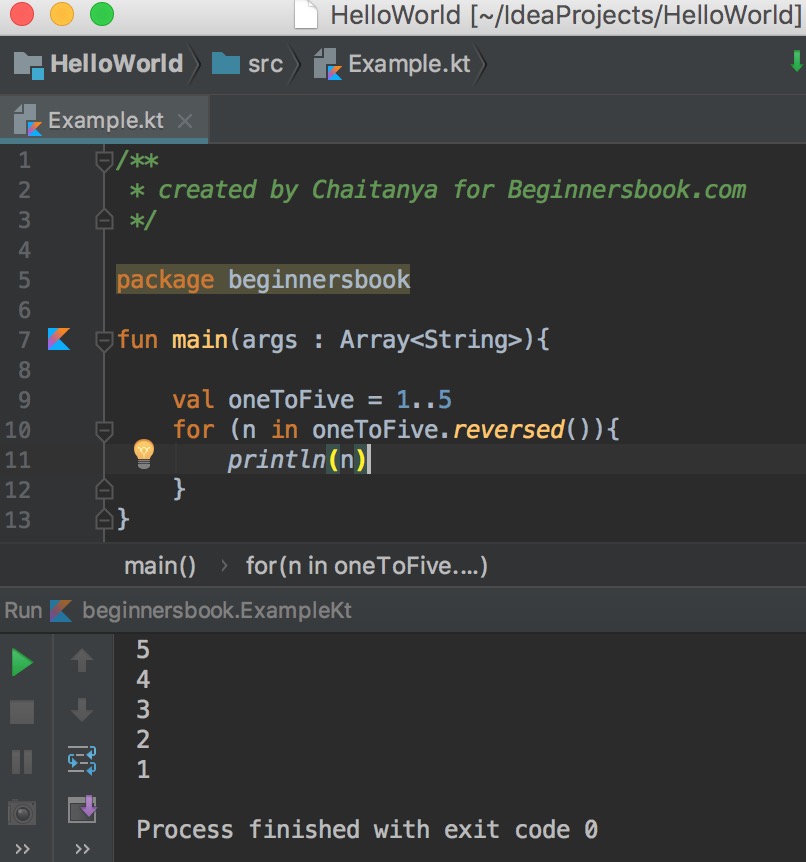

We make this comparison by evaluating a conditional statement which generally consists of two or more pieces of data that are separated by logical operators and/or comparison operators. When you want to measure something against another, you make a comparison or a check. (Recommended) If you’re following along, you should do so with the IntelliJ IDEA IDE – it’s FREE.Understand how to define variables in Kotlin.If you’re already familiar with other programming languages, such as Java, C, C++, C#, etc… you will find that the first part of this tutorial on conditionals and their operators will be a review. This tutorial also covers conditional operators, logical operators, and a variety of syntax that are used with each topic. We can use first, last and step properties of a range to find the first, the last value or the step of a range.In this tutorial, we are looking into conditionals, ranges, and the “when” statement in the Kotlin language. The function until() can be used to create a range but it will skip the last element given. The function reversed() can be used to reverse the values of a range. Ranges can be created for characters like we have created them for integer values. Let's have a look at the following example: Example We can use step() function to define the distance between the values of the range. If we want to define a backward range we can use the downTo operator: Example So the above code can be re-written using. The rangeTo() is often called in its operator form. When you run the above Kotlin program, it will generate the following output: To create a Kotlin range we call rangeTo() function on the range start value and provide the end value as an argument. Exampleġ.10 // Range of integers starting from 1 to 10Ī.z // Range of characters starting from a to zĪ.Z // Range of capital characters starting from A to Zīoth the ends of the range are always included in the range which means that the 1.4 expression corresponds to the values 1,2,3 and 4. The main operation on ranges is contains, which is usually used in the form of in and !in operators. Kotlin ranges are created with rangeTo() function, or simply using downTo or (.) operators. Kotlin range is defined by its two endpoint values which are both included in the range.


 0 kommentar(er)
0 kommentar(er)
